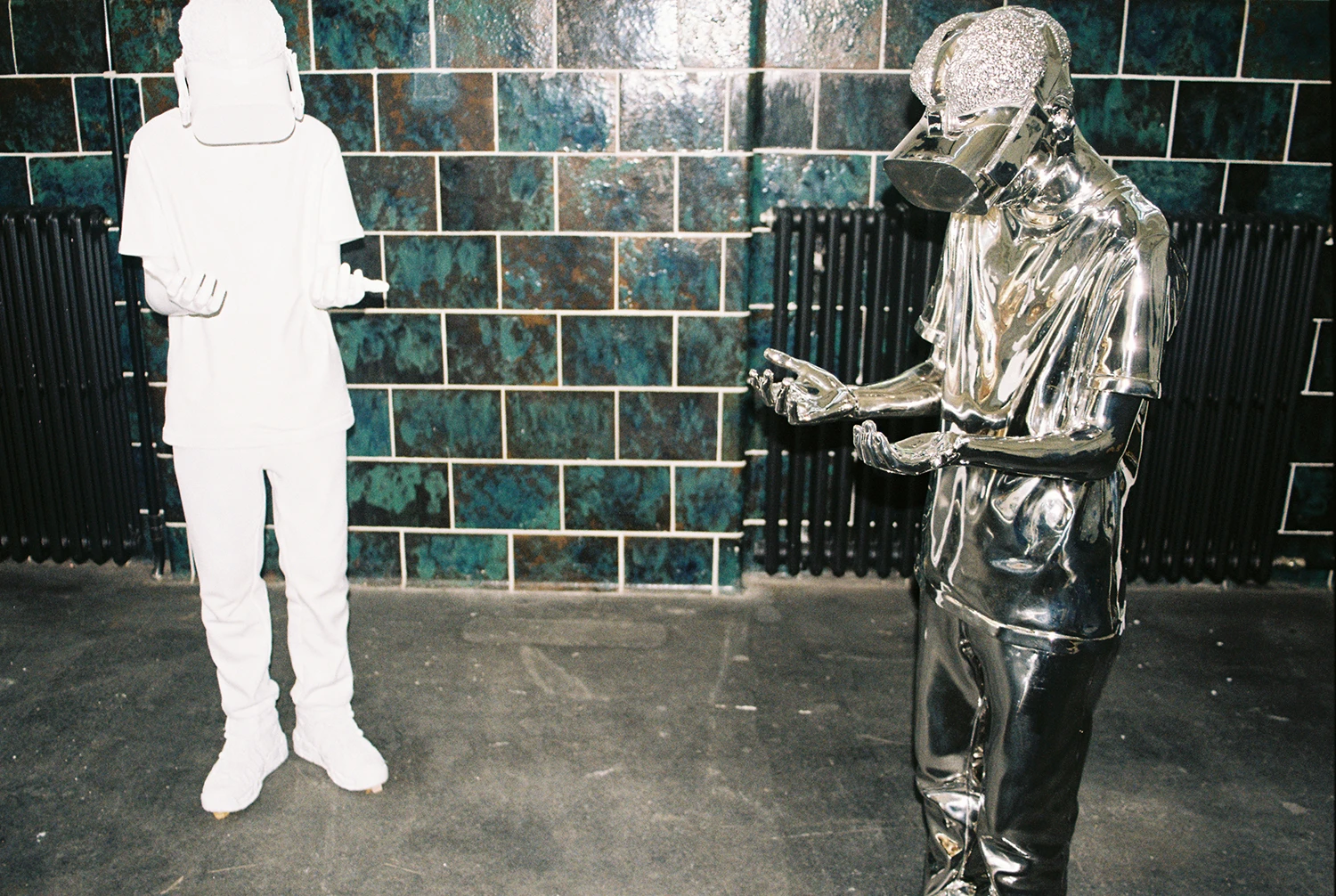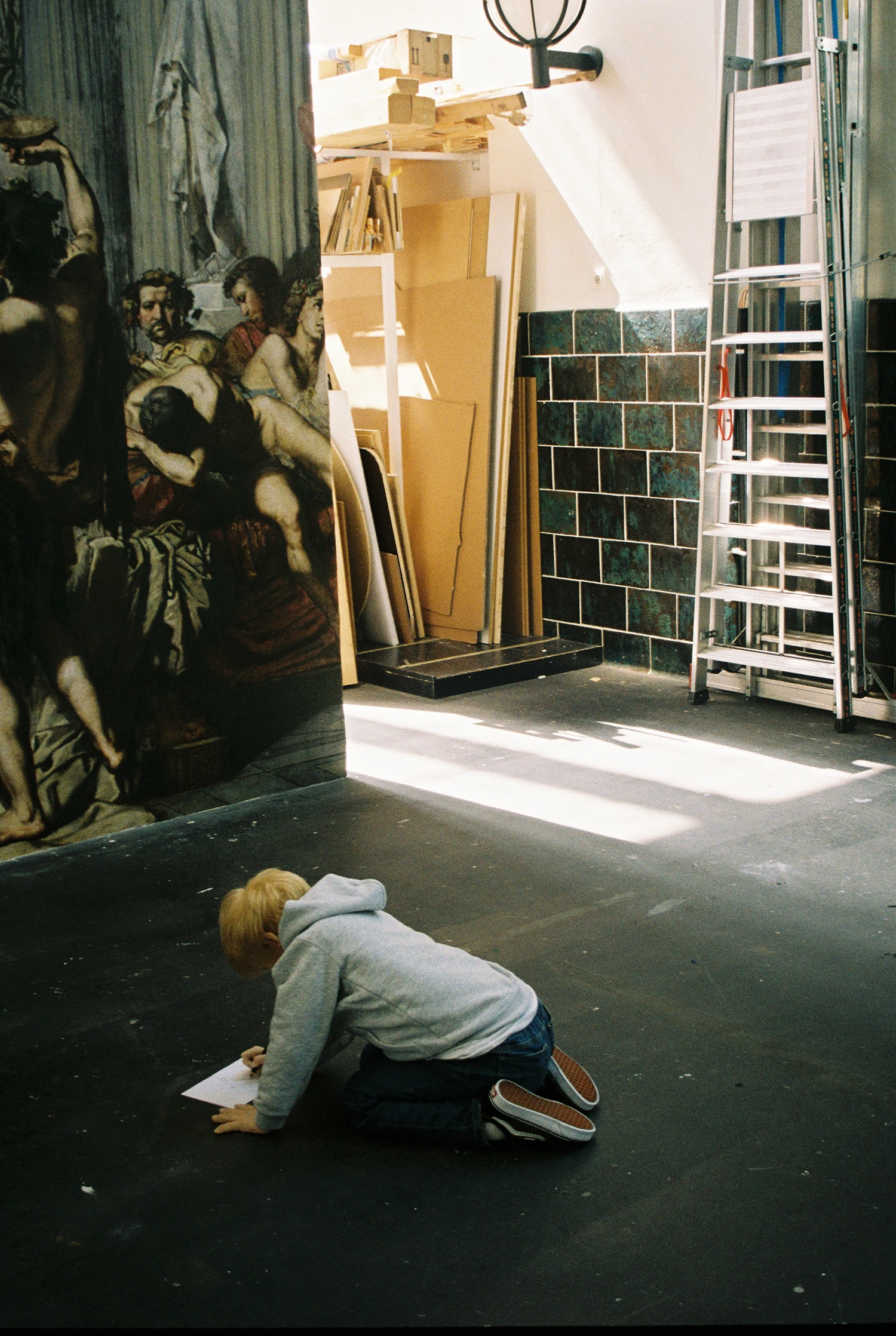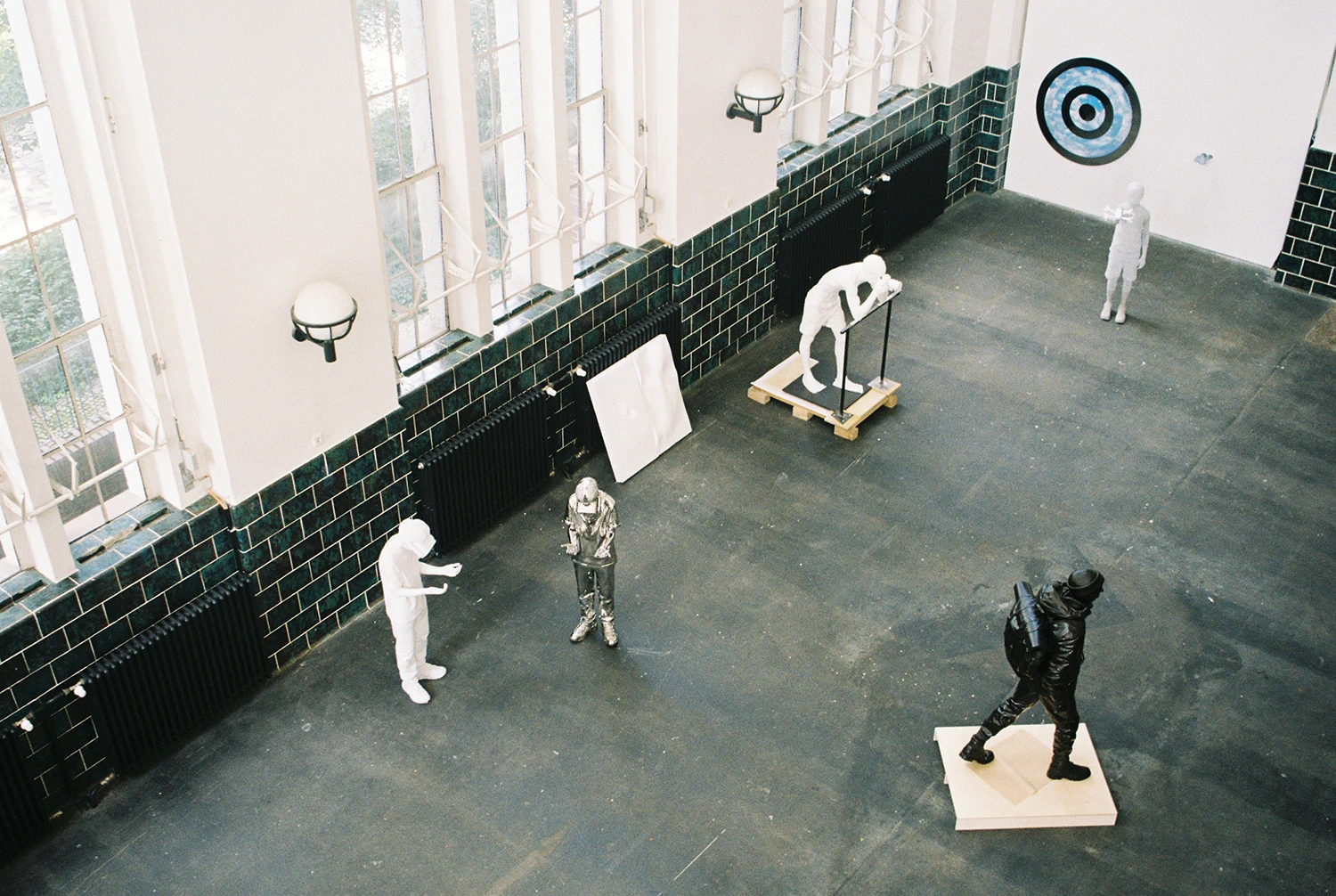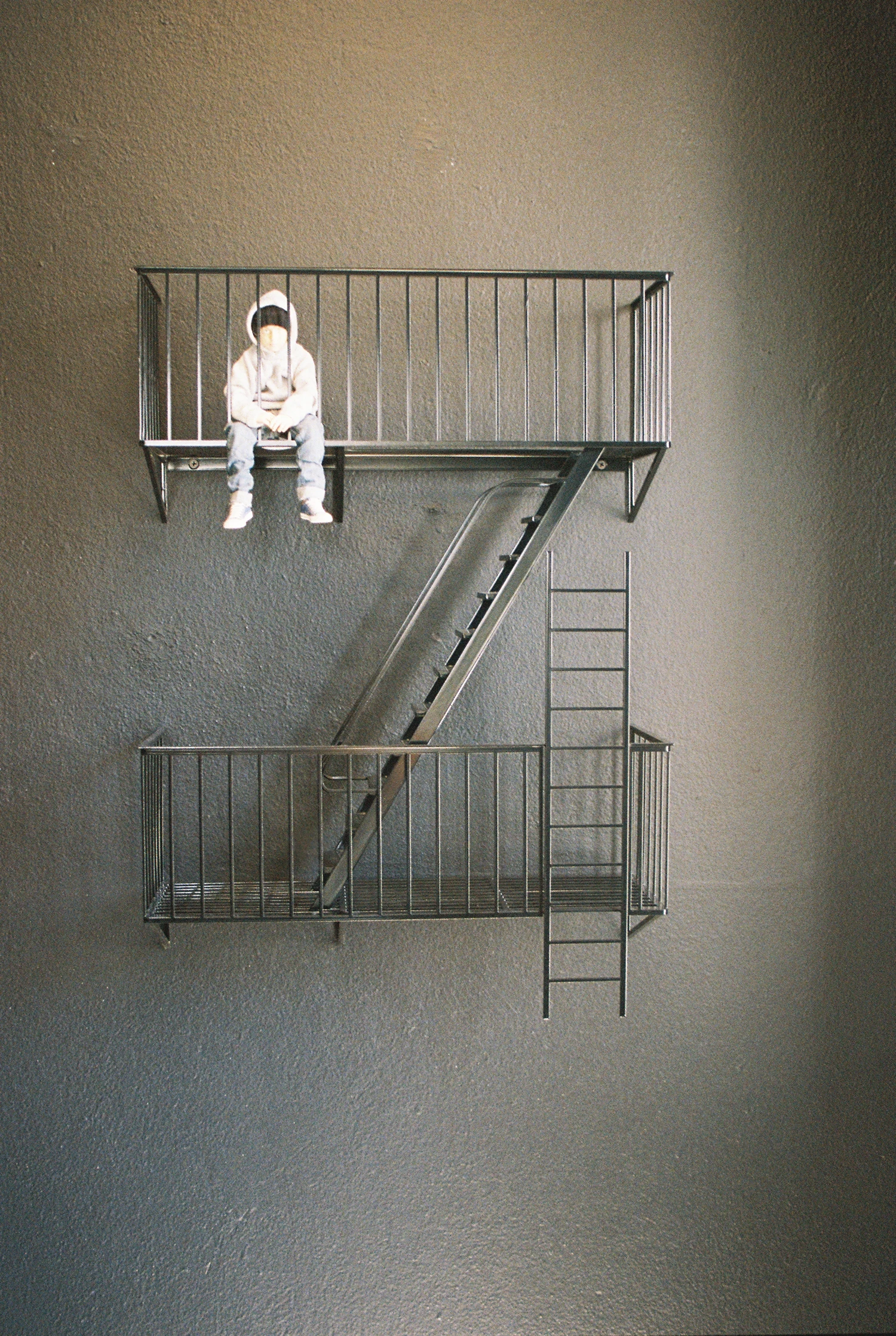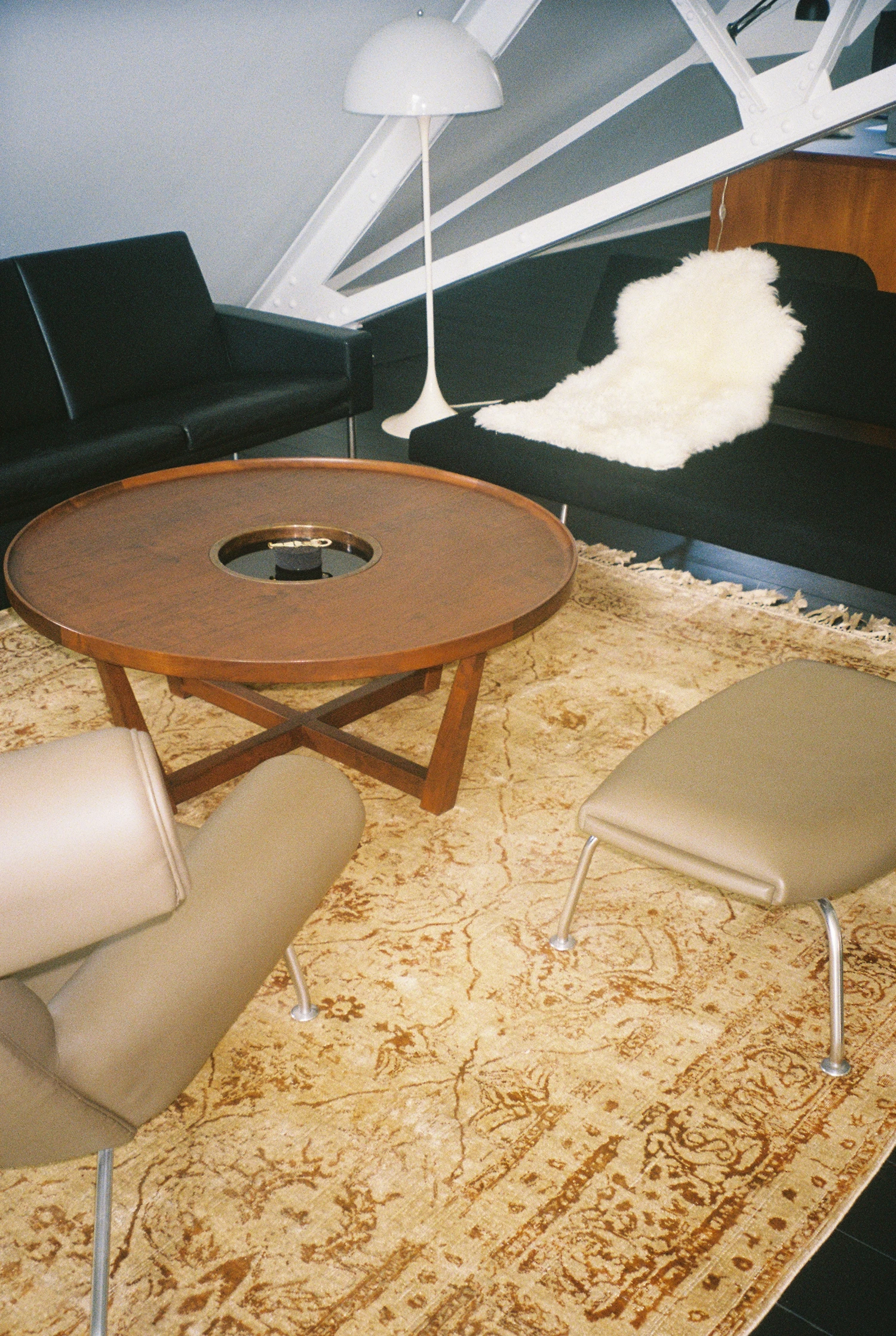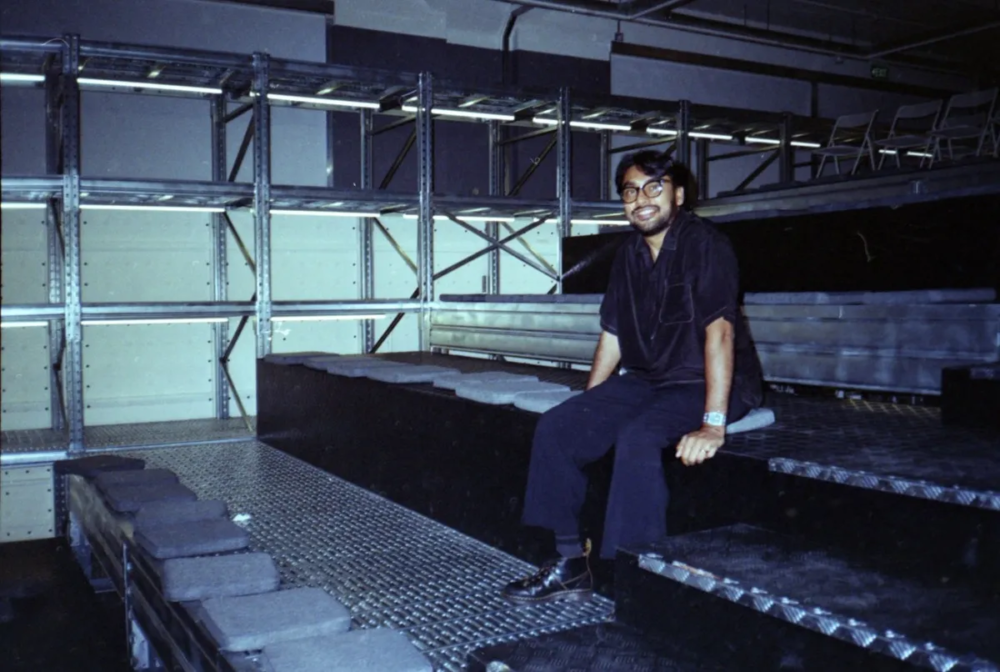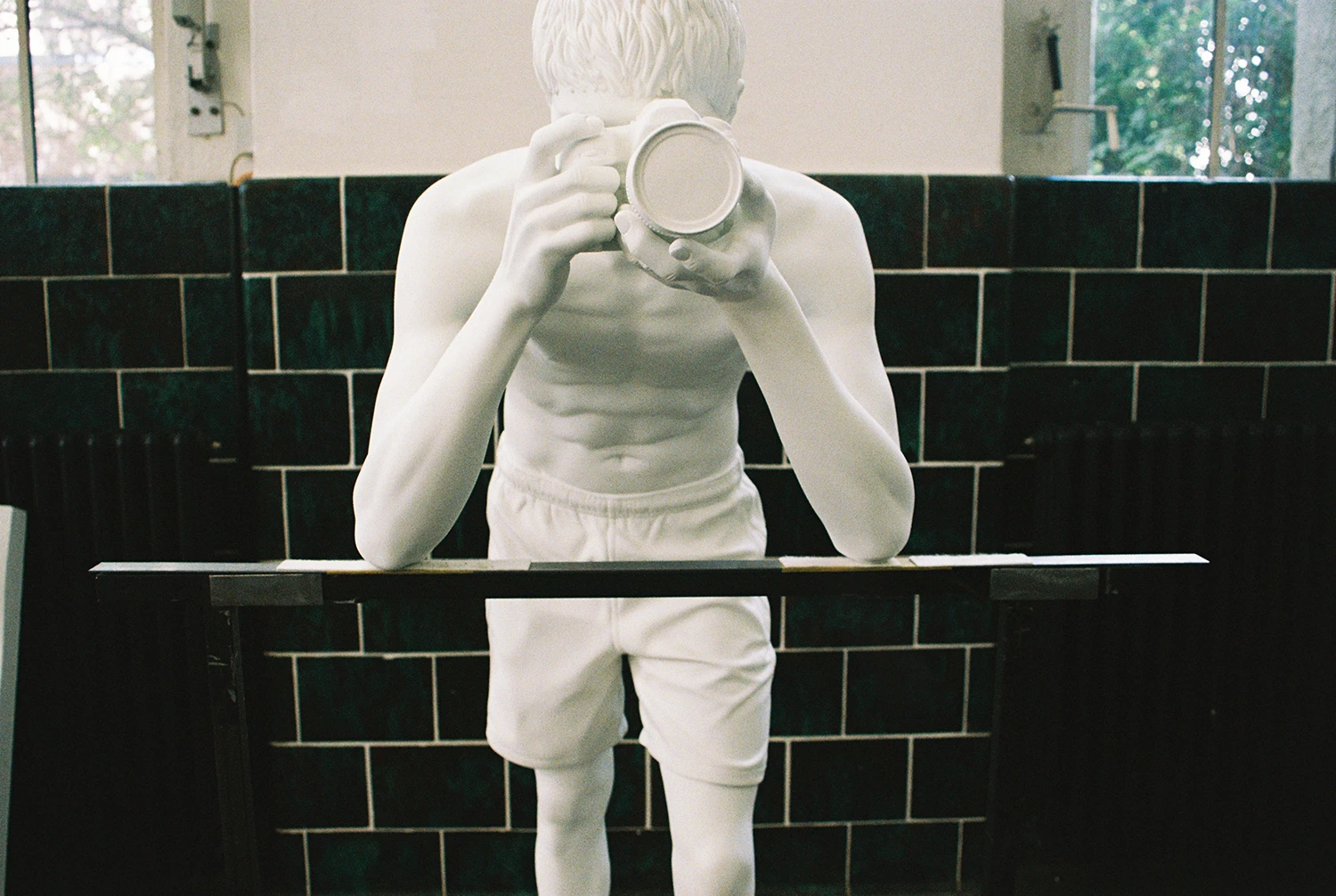
Elmgreen & Dragset: Fine Art and Swimming Pools
From their early performances in Copenhagen’s queer art scene of the 1990s to the large-scale installation The Audience for Prada Mode London 2025 at Town Hall, King’s Cross, Elmgreen & Dragset continue to question how viewers engage with art in public and institutional contexts
Prada Mode London 2025: Elmgreen & Dragset Transform Town Hall into an Immersive Cinema Experience
Prada presented the thirteenth edition of Prada Mode in London on October 15–16, 2025, at the restored Town Hall in King’s Cross. The project, created in collaboration with artists Elmgreen & Dragset, coincided with Frieze London and introduced The Audience – an immersive installation designed as a cinema exploring spectatorship in the age of visual saturation and digital connectivity. Inside the space, a deliberately blurred film played in a continuous loop, surrounded by hyperrealistic sculptures of viewers frozen in various states of attention. Another piece, The Conversation, portrayed a woman in a bar interacting via FaceTime with a film character, extending the dialogue between screen and reality.
Inside Prada Mode London: Talks, Performances, and Reflections on Audiences
The opening day featured an extensive program of discussions and live events examining how people observe, participate, and respond within cultural spaces. Kirsty Sedgman delivered Sit Down and Be Quiet, a talk on the history and behavior of audiences and how digital life influences attention and engagement. Shona Heath and James Price joined Paolo Moretti for Designing for an Audience, Real and Unreal, a conversation on the impact of spatial design and scenography on viewer perception. The day also featured a spoken word performance and DJ set by James Massiah, live performances by Lynda Dawn and ENNY, and evening sets from Mimi Xu, SBTRKT, and Call Super. Through these sessions, Prada Mode turned the act of watching into a subject of artistic and social exploration.
Day Two at Prada Mode London: Public Space, Performance, and Collective Vision
On October 16, the second day of the program expanded the conversation on audiences and public experience. Elizabeth Diller joined Elmgreen & Dragset for Performing Publics, a dialogue on how museums, architecture, and installations shape collective participation. Sir Isaac Julien spoke with Efe Çakarel in The Audience Is Many, reflecting on how his multichannel works and films reach viewers across galleries, festivals, and streaming platforms. The day continued with The Audience – live acting performances featuring Calum Goring and Toby Webster, a DJ set by BOBBY., and live music from Léa Sen, Tony Njoku, and Bendik Giske. Extending beyond its two-day program, Prada Mode London opened to the public from October 17 to 19, 2025, turning Town Hall into a site of observation, interaction, and creative exchange.
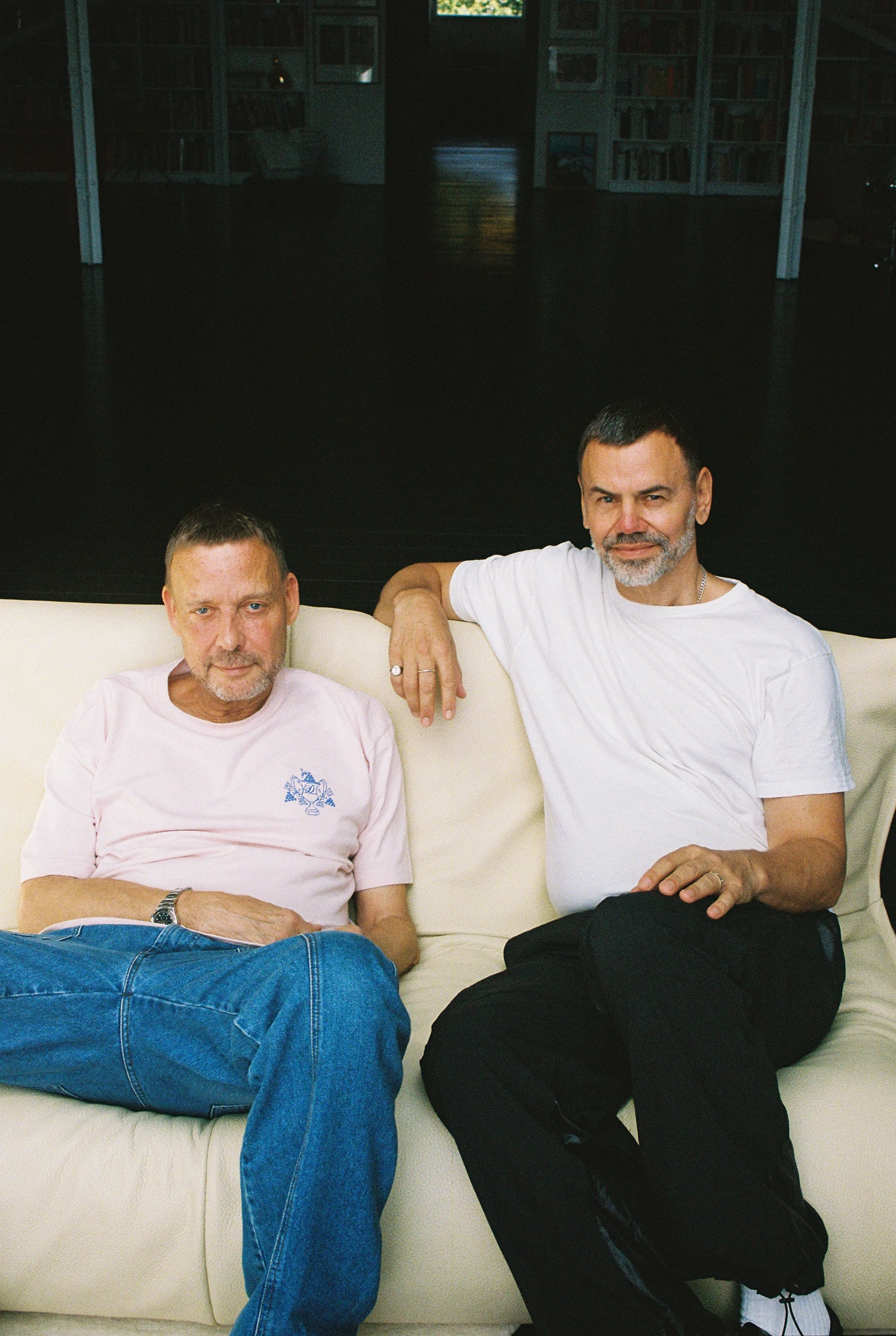
Interview with Elmgreen & Dragset – everything happened in Copenhagen
Everything happened in Copenhagen in the early nineties. We met one night at the After Dark club. Michael wrote poetry and Ingar came from the performance theater scene. We were working in the cultural world and then started collaborating, mixing our backgrounds and doing art performances. In Copenhagen, there was an open scene at the time. It was like a generational shift where we learned a lot from our peers.
There was freedom, because institutions in Denmark were quite conservative. We would never get an invitation to show our work there. We didn’t have to live up to anything, to please anyone, or to get a position to be loved. We could do what we wanted with our friends. We were immersed in the whole queer and identity studies in the US, which just arrived in Scandinavia. We met Felix Gonzalez-Torres at some point. He was already sick, but we were inspired by our conversations with him. We met Connie Butler who’s now the director of MoMA PS1 in New York, she looked at our few first artworks and helped us formulate thoughts around it. We weren’t quite aware of what we were doing, we acted more from intuition.
Roughness according to Elmgreen & Dragset
We are soft and neurotic. We work on the finer polishing and coating details. We don’t keep the surface of our work rough. It is smooth – but also smooth can be rough: we take objects and hang them up from the ceiling upside down, or push them into the ground. We twist the situation. In 12 Hours of White Paint (1997), one of our first performances, we attacked the gallery, painting it over and over again from noon till midnight. We washed down the paint with a water hose in between, making a mess out of the white cube. In our first performance Untitled, (1996), we were unraveling our long knitted skirts in slow motion. It was done to create a much softer masculine image than what you would have at the beginning of the grungy nineties. Part of Ingar’s theater education was about juggling and miming. Every time we are in a car in Berlin together and there’s a juggler in the middle of the street, Michael says: ‘That could have been you.’
We didn’t come from the art world, we didn’t go to art academies. We were surprised to experience that most places that show art are quite standardized in how they look. It didn’t matter if we would go to Asia, to the United States of America, or anywhere in Europe, all the white cubes looked more alike than McDonald’s. The Zurich Kunsthalle and its display looked like an art fair and we were like, ‘Maybe we can make our exhibition about transforming it into a nice exhibition environment.’ So the idea at the basis of our art production is to use museum or gallery spaces as our canvas. This is our raw material. Today we may not work so much about transforming the white cube by breaking holes in it or repainting it, but we do what we call ‘dressing it up in drag.’ We make it look like something else for the period of our exhibition. It can look like a home, a public swimming pool, a hospital room, or an airport.
The first project we did in Milan was an exhibition at MASSIMODECARLO Gallery, in 2022, How Are You Today?. The gallery used to be in a different place from now – a working-class or lower-income area of town. There was no relationship between the gallery and the surrounding neighborhood, or even between the people in the same building complex. We cut a hole in the gallery’s ceiling and put a ladder in the empty gallery space. When people climbed the ladder, they stuck their heads into the kitchen of the woman that lived above.
Daria Miricola. Berlin is still the city where you live and work. Your studio in located in Neukölln within a 10,000-square-foot water pumping station from the 1920s. From the exterior, the building presents a pristine, industrial brick facade whereas the interior is designed as a bright open space divided between a ground floor and a mezzanine hosting the team members’s desks and workstations.
We have a group of about 16 people working with us in the studio. Some are working with images and graphic design, some are doing computer renderings. A few people are working in the workshop, doing the preparation and modeling of our figurative sculptures. Sometimes we do live casts, sometimes we scan people here and elaborate the data and print out. There’s not one day that looks like the other. There’s also a lot of traveling to bronze or steel foundries or to our marble carver in Carrara, who we work closely with because, of course, they help us turn our prototypes into a different material.
One of the first sculptures we ever made was a diving board penetrating a panoramic window with a view of the seaside: Powerless Structures, Fig. 11 at the Louisiana Museum in Denmark, in 1997. Because they invited us late, there was no space left in this big group exhibition for our performance, and the only place we could find was this panoramic viewing room not normally used for art. We said, ‘oh, but can we have that room? Because there are no other rooms left’ and they said yes. We were happy about that because doing the same thing is never fun. We were always getting invitations to do performances, and we felt like we were more of an entertainment element in a group show, ‘oh, we need some activity, let’s call Elmgreen & Dragset.’
Interview with Elmgreen & Dragset on Lampoon 30 – The Raw Issue
Your sense of humor is the result of channeling bad feelings into something different.
Seeing a diving board that goes through a window is funny, but there’s this underlying sadness as well that makes the whole experience more complex. An object can be performative, almost like humans. The diving board was maybe the first time where we were a bit surprised at how engaged people were with a sculpture. Then there was the Nordic and Danish pavilions at the Venice Biennale in 2009. For this project, called The Collectors, we created two homes that people experienced – they used the furniture and became part of the story. We heard a lot of fun ideas about the people who might have lived there, what was the relationship between the neighbors, and so on. The Collectors probably got us way more into these complex shows that use storytelling.
Another project where peoples’ reactions surprised us was The Whitechapel Pool (2018) at the Whitechapel Gallery. People thought that the pool had been there – that we had kind of excavated the gallery and found this pool somehow. Some even claimed that they had been swimming there when they were little, even though it never existed.
Prada Marfa was also a surprise, because we didn’t even imagine that people would see it when we did it in 2005. It’s remote, it’s three hours from the nearest airport, and you drive for hours without seeing anything, just cactuses and tumbleweed. There were 30 people at the opening. Most of them were local ranches and our galleries. Then through Instagram, The Simpsons, Beyonce, and Gossip Girl, the work became famous and a lot of people now feel they know it even if they haven’t been there.
The pool has different societal meanings and associations. It can work metaphorically. One is that the pool will be a kind of replica of nature, an attempt to improve or take control of nature. Public pools are where we are allowed to almost be naked and all kinds of body types accept each other to some extent because it’s a controlled environment. In queer imagery and culture, the pool is an icon. You’ve seen it in a lot of gay artists like David Hockney. The pool also taps into a middle-class American dream of having a symbol of success and wealth, like our pool Van Gogh’s Ear (2016) turned up on its side at Rockefeller Plaza. Somehow, fine art and swimming pools are almost the opposite. Certain things are not so arty in their design. The pool is a banal, simple, and pleasurable object, not so much art-worthy.
Some of the works we are discussing are public outdoor sculptures, some were thoughts for gallery exhibitions. There are differences between these two types of works. One of them involves the fact that visitors choose to attend an art exhibition whereas, when it comes to public commissions, they are quasi-imposed to inhabit those spaces.
That is the difference. If people go to a museum – sometimes even paying money – they’re prepared for an art experience. Maybe they are a more trained audience, they’re used to art, and they’re more focused. If you do a sculpture out in public, people haven’t asked to see your sculpture and you don’t know what mood they’re in. They might have won the lottery five minutes ago, or maybe they just lost their job. You need a certain respect and understanding for that viewing situation when you make a public sculpture. When we did Van Gogh’s Ear people were relating a lot to it, slowing down in their car, trying to crawl up in the swimming pool, or photographing themselves in front of the work. A lot is going on at Rockefeller Plaza. You’ll have a lot of competition, but if you do something bold that sticks out from the environment, it is possible to make people interact fearlessly with your sculpture.
We’re working on two shows coming up in the autumn, and the first one is in Seoul. There’s much going on there from music, fashion, film, TV series, and from the art scene as well. We are having a proper museum show there, with large-scale installations that people will be walking through. Then we have a show at Musée d’Orsay, that usually doesn’t have many contemporary projects. We’ll juxtapose our sculptural work with the collection.
